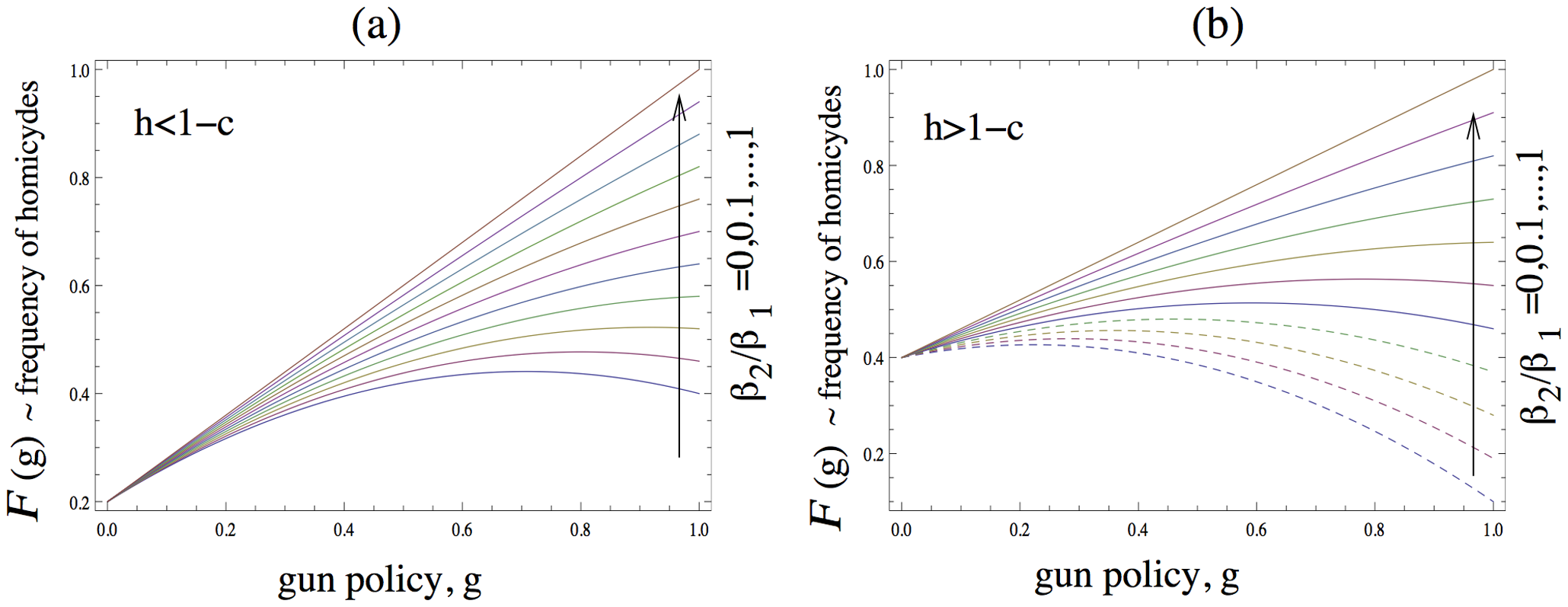There is a heated national debate about gun control.
Two mathematicians have designed parameters they say can help best prevent both one-on-one killings and mass shootings in the United States. Their findings, that properly-enforced gun laws will help, are not new. Like hockey, 'enforce the rules we already have' would seem to apply to guns. Instead, the cultural focus is on 'assault weapons', a tiny fraction of gun homicides, while ignoring the psychiatric common denominator and that the overwhelming number of gun deaths are suicides - not mass shootings. Shooting sprees happen just as often in European countries where guns are banned as they happen in the US.
"This debate cannot be settled satisfactorily by verbal arguments alone, since these are often driven by opinion and lack a solid scientific backing," the authors write. "What is under debate is essentially an epidemiological problem: How do different gun control strategies affect the rate at which people become killed by attackers, and how can this rate be minimized?"
The duo reviewed available data stretching as far back as World War I, then drew up equations to compute whether policies ranging from a total firearm ban to "arm everyone" increase or decrease homicides.
There was too much data missing to make the results truly authoritative but they did find that in more common domestic and one-on-one crimes, reduced legal gun availability is likelier to lower deaths. But they also found that in those rare mass shootings, armed citizens might save lives if sufficiently trained to avoid accidentally shooting fleeing bystanders.
"It's time to bring a scientific framework to this problem," said lead author Dominik Wodarz, a mathematical biologist who works on disease and evolutionary dynamics and did the analysis with his co-author (and wife) mathematician Natalia Komarova.
The data are fuzzy. Sometimes gun deaths are double-counted; in many agenda-driven analyses a criminal is counted as both an assailant and a victim if he died in a fight with police. And they think homeowners who used a weapon to stop a robbery might not make a report to police, leaving them out of the data.
Key parts of their equations should be studied more closely: obviously a concern should be the fraction of offenders who illegally possess a gun. Other studies say that even those with misdemeanor violations were more than 9X more likely to commit a gun crime. Other factors they would like to add, such as the statistical degree of protection provided by legal gun ownership and the number of people who are legally carrying a gun when attacked, are too intangible. A low crime area where it is known that people own guns is going to have a higher statistical degree of protection, though they are never used so in a mathematical analysis the guns have no value. A state like Illinois, where a court recently had to overturn their ban on concealed weapon permits and right to ownership as unconstitutional, would show no value for guns protecting people under attack because citizens were not allowed to carry guns. Connecticut has very strict gun laws yet a mathematical analysis would unfairly blame the guns a single mother owned for home protection rather than the son who killed her and dozens of others.

The rate of death caused by shooting in an one-against-one attack, as a function of the gun control policy, where corresponds to a ban of private firearm possession, and to the “gun availability to all” policy.(a) The fraction of people who possess the gun and have it with them when attacked is relatively low, with. The different lines correspond to different values of . For all values of , the shooting death rate is minimal for. (b) The fraction of people who possess the gun and have it with them when attacked is relatively high, with. As long as condition (5) holds, the shooting death rate is minimal for (ban of private firearm possession, solid lines). If condition (5) is violated, then the shooting death rate is minimized for (“gun availability to all”, dashed lines). Credit:
doi:10.1371/journal.pone.0071606
President Barack Obama in January labeled firearm deaths a public health crisis and opened the doors for sociologists to get federal grants and weigh in on gun control. 35% of gun deaths are homicides, just over 11,000 each year, which per capita has dropped a lot since the 1980s, but is going to get a lot of taxpayer money to try and make some sense of what works and what is just political posturing.
"If the current discussion could be steered toward science, rather than having a heated debate without much of a logical foundation, a big step forward toward saving lives would be achieved," the authors note.
Citation: Wodarz D, Komarova NL (2013) Dependence of the Firearm-Related Homicide Rate on Gun Availability: A Mathematical Analysis. PLoS ONE 8(7): e71606. doi:10.1371/journal.pone.0071606






Comments